I hate making eye contact, and I think it’s because I don’t know how to have normal conversations with people. I get embarrassed and look away because I feel awkward. I think it’s getting in the way of making connections, but eye contact makes me uncomfortable. How can I fix this?
There are several reasons why we avoid looking people in the eye. We’re going to discuss the underlying reasons why you might have trouble making eye contact and what you can do if making eye contact during conversations is hard for you.
Sections
Reasons why you may have problems making eye contact
From birth, we use nonverbal communication to determine if other people are safe and trustworthy. If you spend time with a baby, you might notice that they intensely follow your gaze. Studies show that babies are more likely to follow a caretaker’s eyes than just their head movements. That’s because we’re instinctually wired to use eye contact to connect with other people.[1]
However, eye contact doesn’t always feel easy or natural. Eye contact can be especially challenging when talking with someone. Here are some of the most common reasons why you might make little or no eye contact:
1. You have social anxiety
A reluctance to make eye contact is a sign of social anxiety disorder (SAD).[2] If you have SAD, you have an intense fear of being judged by others. When you make eye contact with someone, it may feel as though they’re scrutinizing you,[3] which can make you feel nervous and self-conscious.
2. You are shy
Shyness is similar to social anxiety, but it’s milder, and it isn’t classified as a mental health problem.[4] If you’re shy, you probably feel anxious and uncomfortable in social situations. You may be especially shy around a new person or someone you want to impress, for example, a senior colleague or someone you’d like to date. You might avoid eye contact because it makes you feel too exposed or vulnerable.
You may also be interested in what it means when someone avoids eye contact when talking with you.
3. You have autism spectrum disorder (ASD)
Autism is a neurodevelopmental disorder that affects nonverbal communication and emotional processing. Problems with eye contact are one of the earliest signs of autism, and an adult with autism will often have the same issue.[5]
According to a 2017 study published in Scientific Reports, people with autism have brains that are unusually sensitive to faces.[6] If you have ASD, eye contact might feel uncomfortable, overwhelming, or invasive.[7]
4. You have ADHD
If you have attention deficit hyperactivity disorder (ADHD), you may find it hard to maintain eye contact if you struggle to focus on other people during conversations.[8]
5. You have a history of trauma/PTSD
You might find it hard to make direct eye contact if you have experienced severe abuse or other forms of trauma. Trauma can change the way your brain functions, leaving it more likely to interpret normal eye contact as a threat.[9]
How to improve your eye contact when you struggle with it
If you can’t make eye contact (or you avoid it), remember that you’re not alone. Here are some strategies that can help you keep eye contact.
1. Identify what situations you struggle with
When is eye contact most difficult for you? Do you notice you struggle more with certain kinds of people, like those in authority or strangers? Do you have any other triggers that affect eye contact, such as going on a date or talking to a girl or guy you find attractive?
Spend some time thinking about these situations. It’s a good idea to be aware of your patterns. If you have that awareness, you can make positive steps towards change.
2. Give yourself time to improve
Mastering eye contact doesn’t happen overnight. It’s a social skill that requires time and practice. You won’t get it right away, and that’s OK. It’s a good idea to continuously remind yourself that change takes time.
You may also find that it takes a while to get comfortable with a new person. For example, if you’re on a first date, eye contact may be very difficult. But by the third date, you’ll probably find that it comes more naturally.
3. Set small goals
Set a weekly eye contact goal for yourself. Make it small and manageable. For example, maybe you will try to make eye contact with a cashier next time you are at the grocery store. Or, you might focus on making eye contact with your boss when you ask for something.
As you gain confidence, you could aim for more ambitious goals; for example, you could challenge yourself to smile and make eye contact with the attractive guy or girl in your class or office.
If you want to achieve your goal, do everything you can to set yourself up for success. Write it down. Read it every morning. At the end of the week, write down how you did. Did you succeed? If you didn’t, what do you need to do differently next time? Remember to celebrate the small milestones. Praise yourself for the progress you are making! It will encourage you to keep practicing.
4. Make eye contact with yourself
You can practice communication skills by yourself. Have a conversation with yourself and look in the mirror as you talk. Try to maintain eye contact with yourself. Try doing this a couple of times a week. You’ll eventually feel more comfortable holding eye contact both when you’re alone and when you’re with other people.
5. Practice with people you feel comfortable with
It’s always a good idea to practice new social skills with safe people. Your safe people may include your friends, partner, family, or therapist. You could even tell them that you’re learning how to be comfortable making eye contact and want to practice with them. Ask if they are willing to give you feedback or hold you accountable for your goal.
6. Take off your sunglasses
Sunglasses are a crutch, and wearing them won’t improve your eye contact skills. Take them off when you talk to other people.
7. Establish eye contact right away
Don’t wait for the other person to take the lead. If you’re somewhere new, make eye contact with people in the room. Pair it with a smile. This gives confidence vibes, even if you feel very nervous inside.
8. Register the other person’s eye color
The next time you’re talking to someone new, look at their eye color. This process—looking and registering—takes about 4-5 seconds. That’s the right amount of time to maintain eye contact.
9. Draw an imaginary triangle to guide your gaze
If you feel awkward looking directly into someone’s eyes, imagine a triangle around their eyes and mouth. During your conversation, shift your gaze every 5-10 seconds from one point of the triangle to another. This is a subtle but effective way of maintaining eye contact without coming across as creepy. When you’re on a date, use the triangle method to strike the right balance between showing interest and coming across as overeager.
10. Practice other nonverbal skills
Eye contact is an important part of body language, but it isn’t the only thing that matters. In fact, eye contact may become easier once you focus on improving your overall body language skills.
To start, turn your body towards the other person. This shows that you’re open and friendly. Put away any distracting items, like your phone. Relax your shoulders and try to maintain a confident posture. For specific tips on mastering body language, check out this guide on confident body language.
11. Lean back a little
When you’re talking to someone new, it’s OK to keep some distance between the two of you. You don’t want to invade someone’s personal space.
The concept of personal space is somewhat subjective, but according to this article by The Spruce, you should aim to stand at least four feet away from strangers. For good friends or family, the rule of thumb is around 1.5-3 feet. If someone starts leaning away from you, it’s a sign you might be invading their space and need to take a step back.
12. Practice breaking eye contact effectively
It’s a good idea to shift eye contact every 5 seconds or so. It takes about that long to complete a sentence or thought.
Of course, you shouldn’t be counting the seconds during a conversation. Doing so will make you feel distracted. The more you practice glancing around the triangle, the more the rhythm becomes more natural. If you’re talking to a group, try to shift eye contact after each person speaks. Otherwise, you might look like you’re overly focused on one person.
13. Practice the 50/70 rule
According to this article by Michigan State University, it’s a good idea to try to focus on maintaining eye contact for about 50% of the time when you speak and 70% of the time when you listen.
It’s impossible to check these percentages (unless you video yourself!), but try to remind yourself of this number before you even begin the conversation. This mindset can help you stay focused on your goal.
14. When listening, look sideways instead of down
If you start feeling really uncomfortable, try to shift your gaze towards the side of the person rather than down at the floor. This may signal to them that you’re processing the conversation or trying to recall important information rather than feeling uncomfortable.
15. Try to blink less often
On average, we blink about 15-20 times per minute.[10] Blinking helps lubricate the cornea and protect your eyes from irritants. Of course, this is a natural process that you probably don’t think about.
But it’s possible that you may blink too much when you feel nervous. For example, if you’re on a date with someone you really like, you may start blinking more than usual. Try to think about how and when you blink. If you think that you’re blinking excessively, it may help to take a few deep, calming breaths.
16. Challenge yourself to talk to more strangers
You have almost endless opportunities to practice eye contact. You just need to be willing to make an effort. Get out more often and, when you do, practice talking to strangers. When you run errands, make small talk with store employees. If you pass a neighbor while walking, make eye contact and smile.
17. Take a public speaking class
If the idea of talking in front of a large group makes you squirm, it might be worth getting out of your comfort zone. Many community colleges have public speaking classes. Even if the whole idea makes you incredibly nervous, these classes will force you to grow and try new skills.
18. Try therapy
Self-help techniques can make a big difference in helping you feel more confident around other people. But if you’re still struggling, it may be worth talking to a professional. This is especially important if you have a mental health condition like depression or anxiety or if you find eye contact so difficult that it’s getting in the way of studying, working, dating, or making friends.
We recommend BetterHelp for online therapy, since they offer unlimited messaging and a weekly session, and are cheaper than going to a therapist's office.
Their plans start at $64 per week. If you use this link, you get 20% off your first month at BetterHelp + a $50 coupon valid for any SocialSelf course: Click here to learn more about BetterHelp.
(To receive your $50 SocialSelf coupon, sign up with our link. Then, email BetterHelp’s order confirmation to us to receive your personal code. You can use this code for any of our courses.)
19. Talk to your doctor about medication
If you struggle with severe anxiety, medication can help. There are numerous options, but it’s important to consider potential side effects. Consider talking to your doctor about the best choice for you.
Common questions
Why does eye contact matter so much?
Eye contact is an important type of nonverbal communication.[11] Eye contact—or the lack of it—can reveal your emotions. It also helps you build relationships and keep a conversation flowing.
Is it rude not to make eye contact?
Some people may perceive it as rude. Giving eye contact shows that you are friendly and approachable. It also shows that you’re paying attention to what they have to say. Even if people don’t find you rude, they might think you’re bored, distracted, or anxious during the conversation.
What does it mean to have good eye contact?
People with good eye contact maintain contact when they’re speaking. If they’re talking to a group, they share their eye contact evenly. They don’t stare the other person down. Instead, they usually try to mirror other people’s nonverbal cues.
Why do I avoid eye contact?
You might feel anxious, shy, or uncomfortable, especially if you don’t know the other person that well. These tend to be the most common reasons. You might also be distracted, which causes you to naturally focus on something else.
Is poor eye contact a sign of poor confidence?
Sometimes. If you can’t make eye contact with someone, it may mean that you feel intimidated or anxious around them. It can also mean you’re feeling insecure, which can explain why you keep looking away.
What if I have a fear of eye contact?
It’s a normal fear, but you can work through this fear with practice. Remember that most people feel a little nervous during social interactions. But the more you can work on this skill, the more confident you will feel.
How do I know when to make eye contact with strangers?
Pay attention to their body language. Are they making eye contact with you? Are they smiling and appearing interested in conversation? If so, these are good signs that they want to connect, even if it’s just for quick small talk.
How do different cultures perceive eye contact?
In America, most people view eye contact as a necessary part of human connection. People equate eye contact with confidence and respect. But eye contact rules are different in other places.
For example, in some Eastern countries, eye contact may be seen as rude or disrespectful.[12] In general, it’s a good idea to try to educate yourself on these cultural differences. If you want to make new friends, you need to be open to learning perspectives. If you plan on traveling to a different country, it’s customary to learn the basic rules and etiquette.
How does eye contact help us feel close to others?
Research shows that we feel most connected when both people are making appropriate eye contact with one another. This is because the direct exchange of eye contact stimulates the autonomic nervous system.[13]
Is it possible to make too much eye contact?
Too little eye contact can make you look anxious or insecure. But too much eye contact can come across as creepy, aggressive, or intimidating. Avoid staring at people. If you’re concerned you might be doing this, check out our master guide on maintaining confident eye contact without overdoing it.
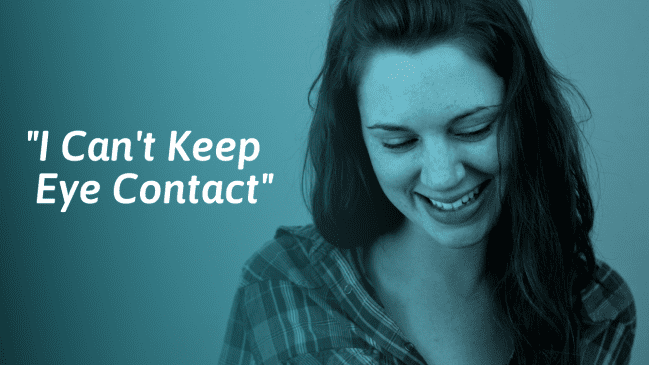



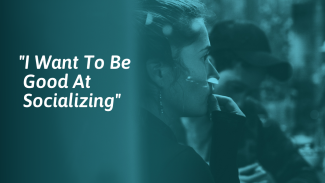


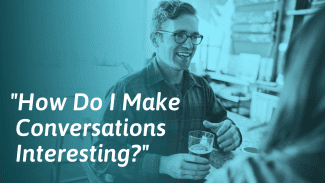
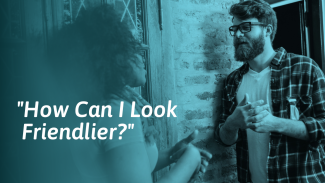


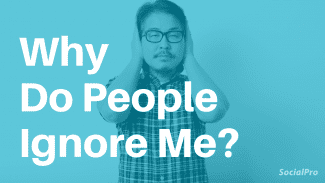
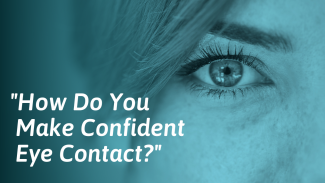


Thank you so much for the information
There are also cultural reasons for it. The old saying “eyes are the windows to the soul” is nothing new and there are cultures where looking someone in the eyes is seen as rude and intrusive. Elders with such cultural backgrounds don’t make eye contact very often. There is/was a very big issue caused by this as white settlers to North America saw many of the natives as dishonest because, as “everyone” knows, if you’re honest you could look them in the eye!